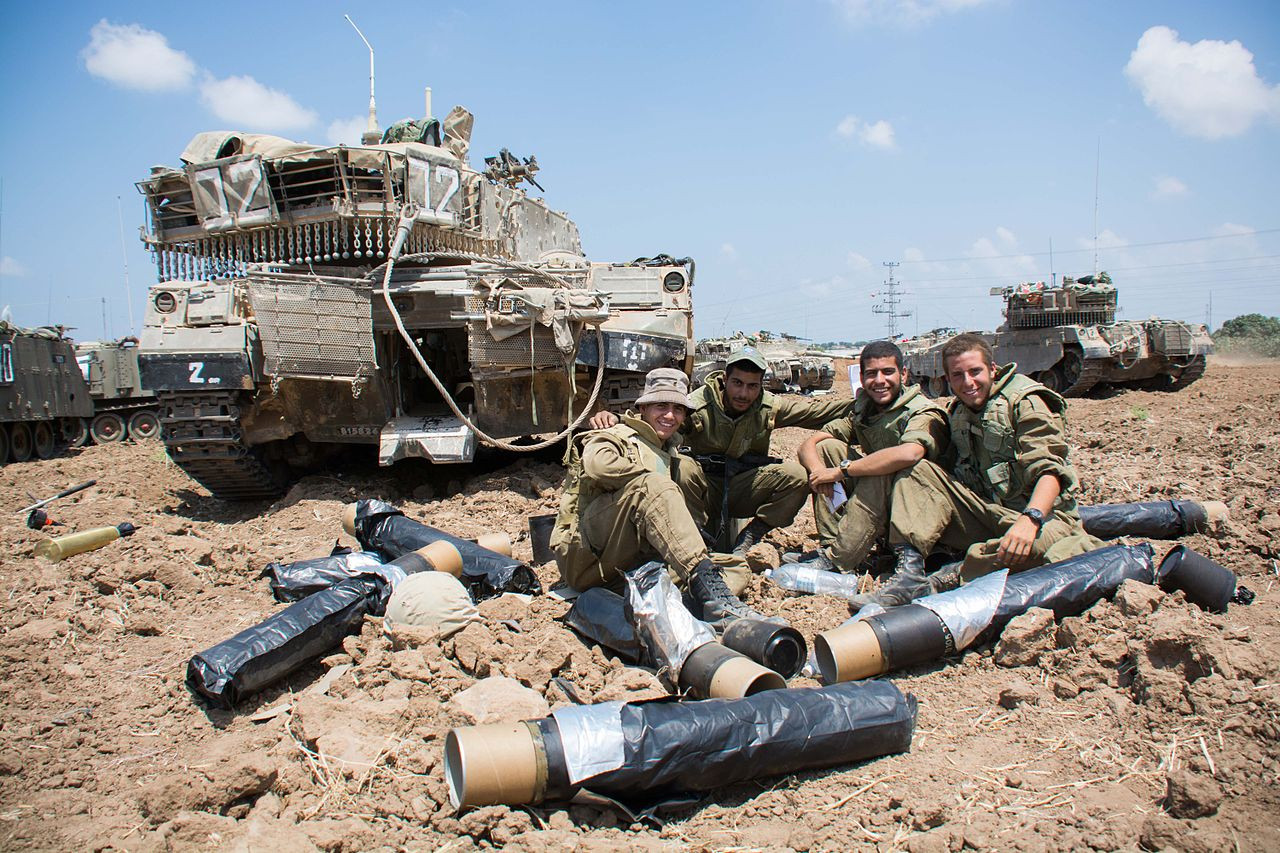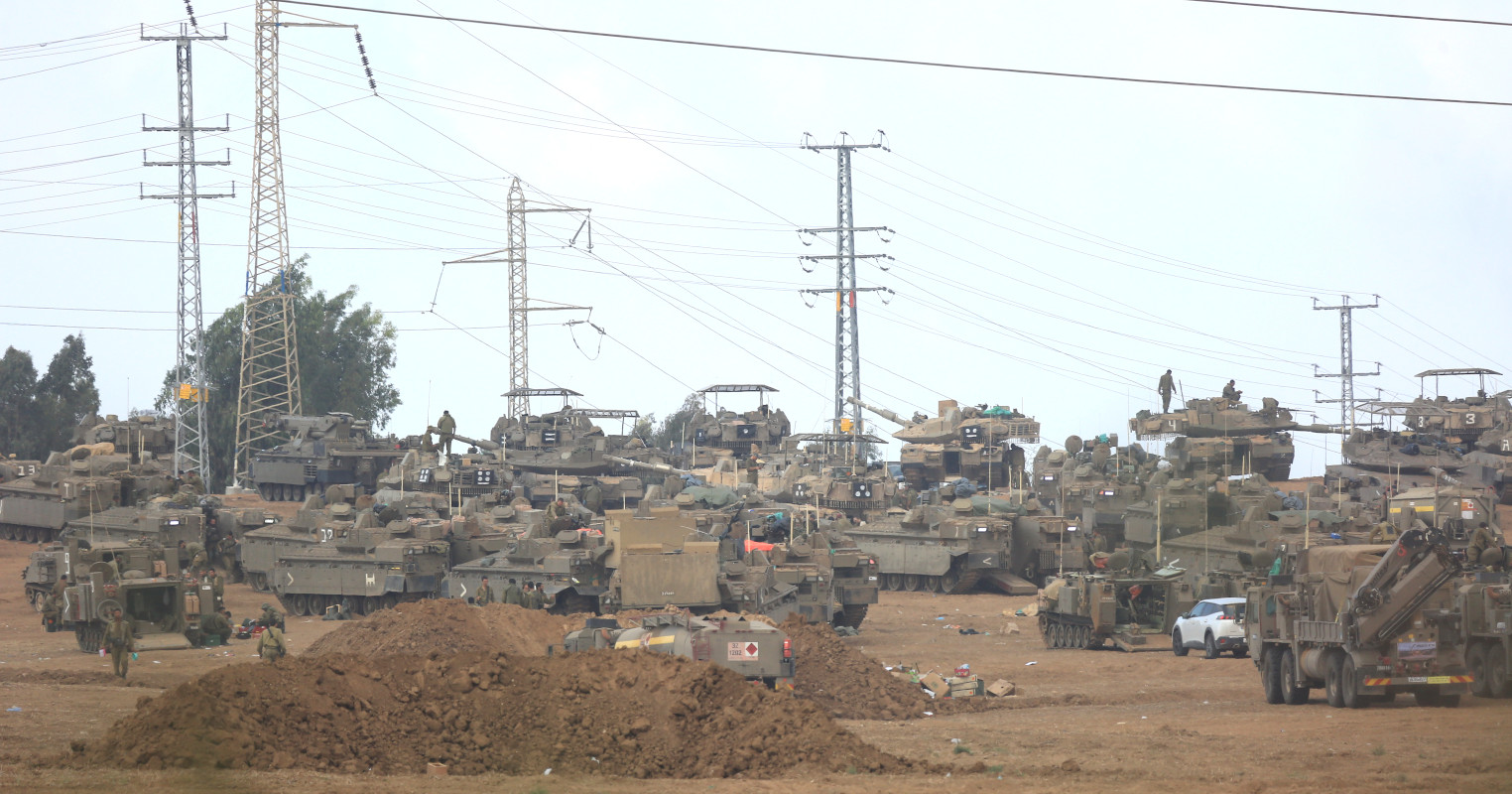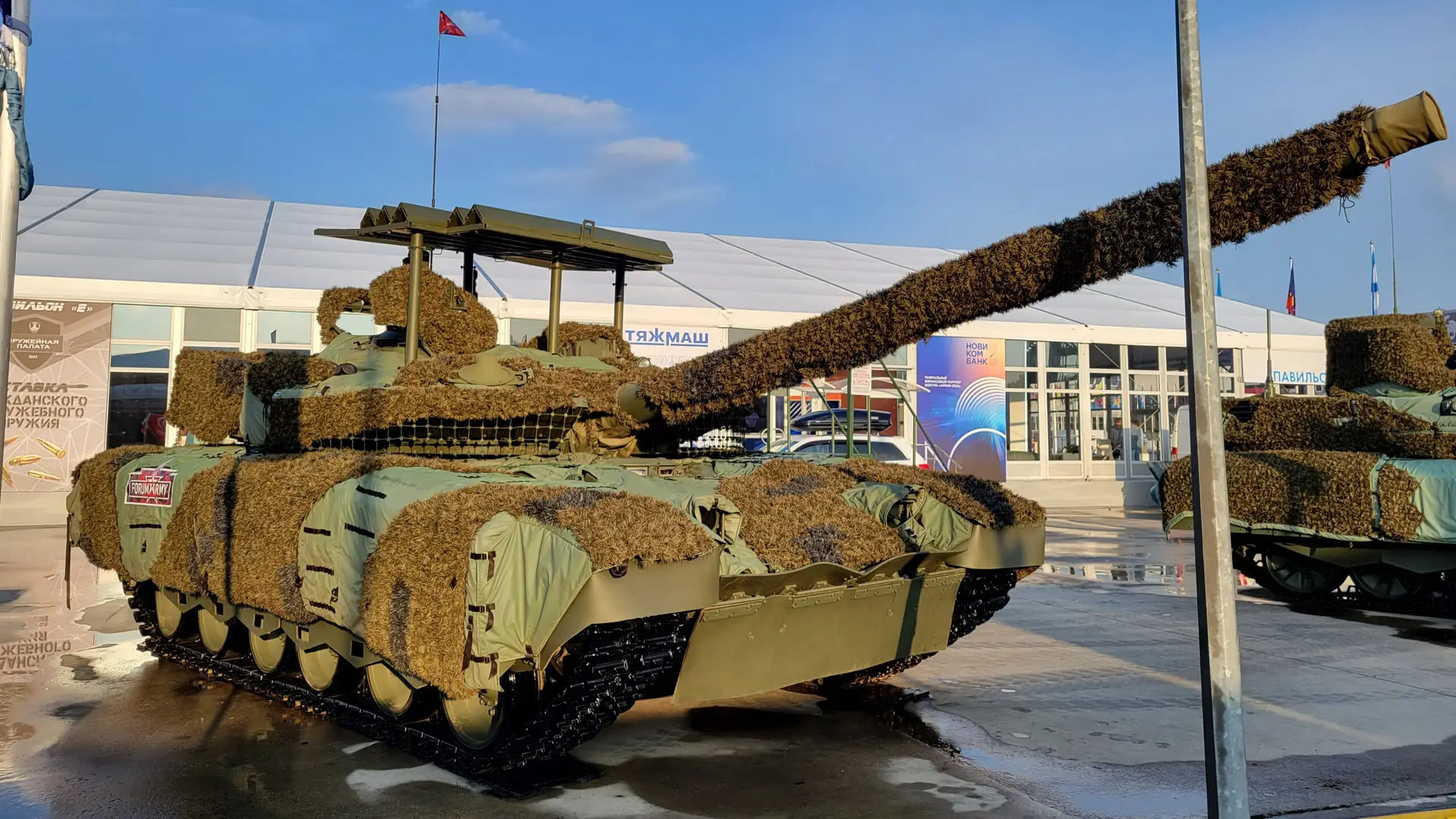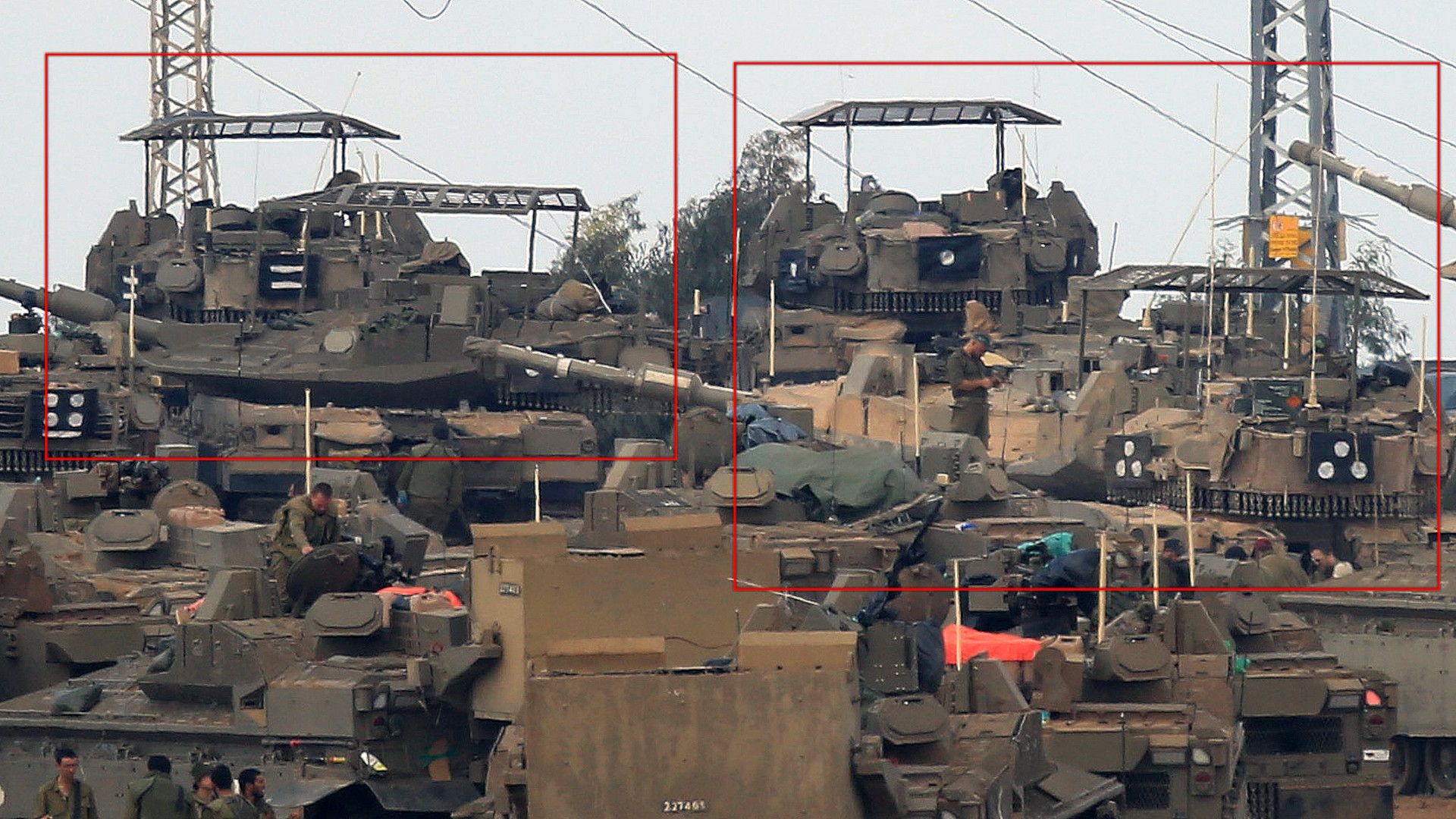Israeli Merkava tanks have emerged with metal armor screens on top of their turrets as the country continues to prepare for a major ground assault into the Gaza Strip. The Russian military was the first to employ this kind of add-on armor, often derisively referred to as “cope cages,” on tanks and other armored vehicles. It has now become a fixture on both sides of the conflict in Ukraine, primarily to provide extra protection against drones, one of the many threats Israel’s forces will also face in Gaza.
The first Merkavas to be seen sporting their own cope cage-like armor appeared in images of Israel Defense Forces (IDF) massing in the southern end of the country around Gaza in the past day or so. A massive Israeli ground operation into the strip has been expected for days now in the wake of an unprecedented wave of attacks carried out by the Palestinian terrorist group Hamas just over a week ago. You can read more about the ongoing crisis in our rolling coverage linked here.
Israeli forces on the ground in Gaza will face a plethora of threats, as The War Zone has previously explored in detail. This includes many dangers from above — particularly weaponized drones. In this context, it is not surprising that the Israelis have taken note of how both sides in the conflict in Ukraine have been helping to protect tanks and other ground assets against armed uncrewed aerial systems of the low-end variety.
Russian tanks first began to appear with cope cage armor in the lead-up to the all-out invasion of Ukraine in 2022. Since then, a wide array of different cope cage designs, including ones with explosive reactive armor (ERA) tiles on top, have emerged. There continues to be much debate over exactly how much protection this kind of top-mounted add-on armor provides and against what kinds of threats.
However, the extensive use of top-mounted armor screens by both Russian and Ukrainian forces shows that it has at least some value, especially against lower-end drones, including small improvised kamikaze and bomblet dropping types. There have been multiple instances where Ukrainian units have claimed to have defeated Russian Lancet kamikaze drone attacks on vehicles using armored screens, as well.
For Israeli Merkavas, the additional armor on top of the turrets should be most useful in disrupting attacks from the aforementioned smaller drones dropping improvised munitions. Hamas used drones like this against Israeli tanks and other vehicles, as well as remotely-operated gun turrets, in its initial wave of attacks on October 7.
Weaponized commercially available drones, especially quad and hexacopter types modified to be able to drop grenades and other payloads have, of course, been a very real threat for years now. Back in 2017, The War Zone highlighted how a video showing an ISIS drone dropping a grenade on an Iraqi M1 Abrams tank during the Battle of Mosul was a sign of things to come. Both this type of weapon and kamikaze drones largely emerged on the world stage the fight to tear Mosul away from ISIS.
It is worth noting that in the fighting in Ukraine, so-called “first-person view” (FPV) kamikaze drones, typically highly-maneuverable commercial quadcopter types armed with a warhead of some kind and that are designed to smash directly into their target and explode, have demonstrated an ability to get around these kinds of add-on defenses.
The add-on armor on top of the turret could also provide an additional layer of protection for the Merkavas against other threats from above, including grenades and other explosive charges dropped on top of the tank from the upper stories of nearby buildings. The top-mounted screens might be able to defeat certain infantry anti-tank weapons, such as rocket-propelled grenades, fired down from above, as well. Much of the expected fighting in Gaza is likely to take place in very dense urban environments where Israeli forces will be at significant risk from these kinds of top-down attacks.
It is interesting to note that the Merkavas that have been seen with these screens so far are all late model types with the latest variation of the Trophy active protection system installed. Trophy uses an array of small radars to detect and track incoming threats and then uses kinetic ‘hard-kill’ projectiles to neutralize them. Israeli defense contractors have been pioneers in active vehicle defenses and continue to be leaders in this space.
Trophy has a very wide and flexible engagement envelope, but has limitations when it comes to engaging targets at very high elevations respective to the vehicle on which it is mounted. The manufacturer Rafael says that the system “provides 360° protection in azimuth as well as extensive elevation coverage,” not total 360-degree coverage in all directions.

Cope cage-style armor may create some added risks, such as making it harder for personnel in a tank’s turret to escape in an emergency. The Merkava, which has a unique core configuration among modern main battle tanks, renders this somewhat moot in that it has a hatch at the rear of the hull through which the crew can egress if necessary. That hatch also gives the tank limited secondary troop-carrying and medical evacuation capabilities. You can read more in-depth about the Merkava and its design here.

Whether or not add-on top-mounted armor screens become more commonplace on Israeli Merkavas or other armored vehicles remains to be seen. The images that have emerged so far show that not all Merkavas now in position around Gaza have this additional protective feature. It is possible that tanks equipped in this way could be intended to serve as lead vehicles in the initial incursion.

What is clear is that the cope cage concept has moved beyond the fighting in Ukraine. Many foreign armed forces, including the U.S. military, pay close attention to what the IDF does, especially when it comes to vehicle protection. Russia has already begun offering armored top-mounted armored screens as a from-factory option on various tanks and other armored vehicles.

In the end, how Israeli Merkavas fare in Gaza with their new add-on armor on top of their turrets could have interesting impacts beyond this particular conflict.
Contact the author: joe@thedrive.com
